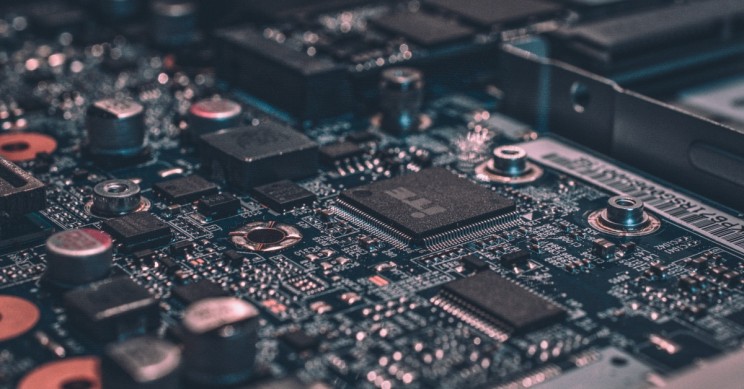In the last decades, Moore’s law has been one of the backbones of our technology industry. The law, defined in 1965, states that the number of transistors on a microchip will double every two years. This prediction has turned out to be accurate on an astonishing level. By shrinking transistors and packing more and more of them on a chip, the computing power of our laptops and phones has increased exponentially over time. The current size of a regular transistor in your laptop or phone is about 14 nanometers (nm) – in comparison: a human hair is 100.000 nm thick. Keeping up with Moore’s law, whilst working with such small dimensions poses a tremendous challenge and requires a lot of research, manpower and money. But until now, we have (most of the time) succeeded.

However, our constant drive for more processing power and hence smaller transistors creates an insurmountable problem: What if we can’t go any smaller? Today, transistors are made of silicon which has an atomic size of 0.2 nm. As stated above, we are nowhere near this number but fast approaching it. Even getting close to a transistor the size of an atom will be incredibly challenging. When we try to work with materials this small, we enter the Quantum realm. Due to a spooky effect called Quantum Tunneling, transistors are not able to stop electrons from passing, they just appear on the other side anyway. Other difficulties are related to heat leakage within the chip and basic economics; developing smaller and more powerful chips requires huge amounts of R&D but an uncertain return on investment. Maybe we will, or maybe we will not find an viable and scalable solution to these problems – but we will definitely not develop sub-atomic scaled transistors anytime soon.
So, why should we care? A maximum number of transistors on a chip dramatically limits the possibilities of the type of chips we are currently using. Computing power lies at the heart of technological improvements. Solving complex problems with techniques such as deep learning requires massive amounts amounts of calculations and hence computer brains. In the last decades, developers and scientists could just plan ahead for times with more powerful chips if their ideas were not feasible yet. In the future, this possibility might not be written in stone anymore. The stagnation of Moore’s rate of growth and the limits of silicon transistors might very soon knock on the door of Silicon Valley itself.
Will this be the end of years of technological improvement and abundance? Probably not. It will however force us to rethink the design of one of our most needed and fundamental technologies today, because the death of Moore’s Law will mean the end of microchips as we know it. Lucky for us, many scientists are already working on our next steps as Michio Kaku will explain to you in this video.
Sources:
Sperling, E. (2019). Semiconductor Engineering – Quantum Effects At 7/5nm And Beyond. [online] Semiconductor Engineering. Available at: https://semiengineering.com/quantum-effects-at-7-5nm/ [Accessed 5 Sep. 2019].
Tibken, S. (2019). CES 2019: Moore’s Law is dead, says Nvidia’s CEO. [online] CNET. Available at: https://www.cnet.com/news/moores-law-is-dead-nvidias-ceo-jensen-huang-says-at-ces-2019/ [Accessed 5 Sep. 2019].
Russel, J. (2019). Nanosheet Transistors: The Last Step in Moore’s Law?. [online] HPCwire. Available at: https://www.hpcwire.com/2019/08/19/nanosheet-transistors-the-last-step-in-moores-law/ [Accessed 5 Sep. 2019].
More readings if you are interested:

